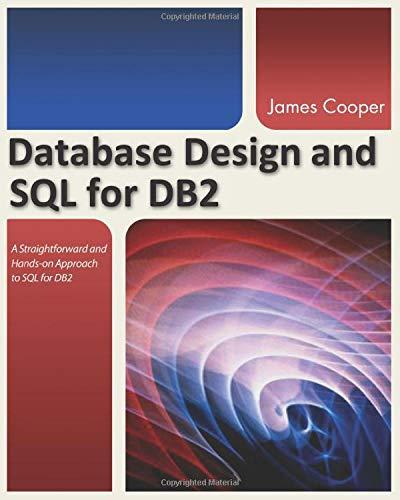Answered step by step
Verified Expert Solution
Question
1 Approved Answer
This is a picture of the question, all the info is here 3. [20 marks] Architecture and Implementation. A data scientist needs a MIPS assembly-language
This is a picture of the question, all the info is here
3. [20 marks] Architecture and Implementation. A data scientist needs a MIPS assembly-language program for data analysis. He has three arrays of floating-point numbers. Array 'a' is a source array, and 'b' and 'c' are result arrays. Array'a' contains '2n' floating-point numbers, 'rl' is the address of 'a[O]'. 'r' is the address PAGE MERGEFORMAT 1 of the byte immediately following 'a', i.e., the address of the imaginary element 'a[2n)'. Each of 'b' and 'c' can store 'n' floating-point numbers. 'r2' is the address of 'b[0]'. '3' is the address of 'c[n-1]'. The algorithm is: walk through array 'a' copying even-index elements to 'b' in 'b' order, after multiplying by 'f2', and odd-index elements to 'c' in reverse order (.e., from high 'c' index to low 'c' index), after multiplying by 'fo'. Write the MIPS code. Use only the following instructions. I.d f6,n(r2) // load to 'f6' eight bytes starting at Mem[r2+n] s.d f6,n(r) // store fo's value to memory starting at Mem[r2+n] mul.d f4,fo,f2 // write 'fo*f2' into 'f4' addi ri,r1,n // add integer 'n' to 'ri' subi ri,ri,n // subtract integer 'n' from 'ri' bne r1,r2, loop // if'ri /= r2' then goto 'loop 3. [20 marks] Architecture and Implementation. A data scientist needs a MIPS assembly-language program for data analysis. He has three arrays of floating-point numbers. Array 'a' is a source array, and 'b' and 'c' are result arrays. Array'a' contains '2n' floating-point numbers, 'rl' is the address of 'a[O]'. 'r' is the address PAGE MERGEFORMAT 1 of the byte immediately following 'a', i.e., the address of the imaginary element 'a[2n)'. Each of 'b' and 'c' can store 'n' floating-point numbers. 'r2' is the address of 'b[0]'. '3' is the address of 'c[n-1]'. The algorithm is: walk through array 'a' copying even-index elements to 'b' in 'b' order, after multiplying by 'f2', and odd-index elements to 'c' in reverse order (.e., from high 'c' index to low 'c' index), after multiplying by 'fo'. Write the MIPS code. Use only the following instructions. I.d f6,n(r2) // load to 'f6' eight bytes starting at Mem[r2+n] s.d f6,n(r) // store fo's value to memory starting at Mem[r2+n] mul.d f4,fo,f2 // write 'fo*f2' into 'f4' addi ri,r1,n // add integer 'n' to 'ri' subi ri,ri,n // subtract integer 'n' from 'ri' bne r1,r2, loop // if'ri /= r2' then goto 'loopStep by Step Solution
There are 3 Steps involved in it
Step: 1

Get Instant Access to Expert-Tailored Solutions
See step-by-step solutions with expert insights and AI powered tools for academic success
Step: 2

Step: 3

Ace Your Homework with AI
Get the answers you need in no time with our AI-driven, step-by-step assistance
Get Started



